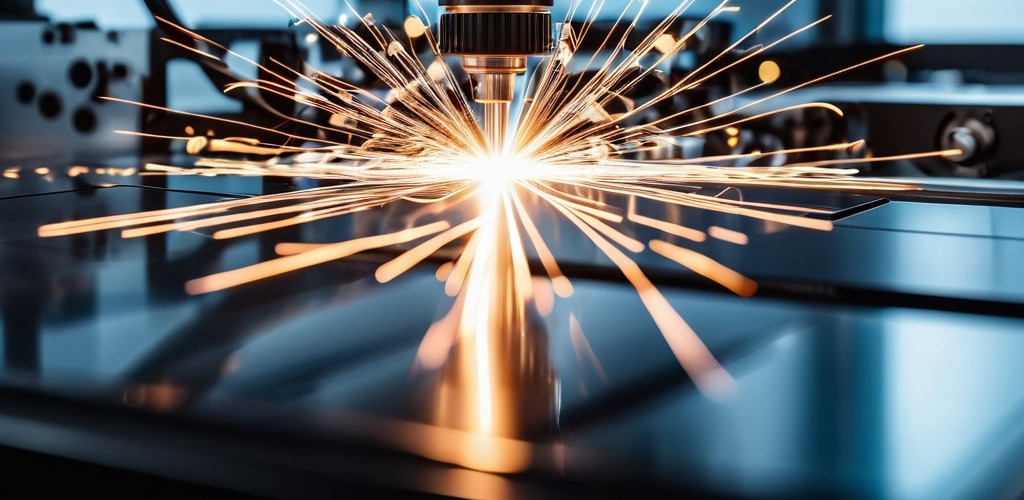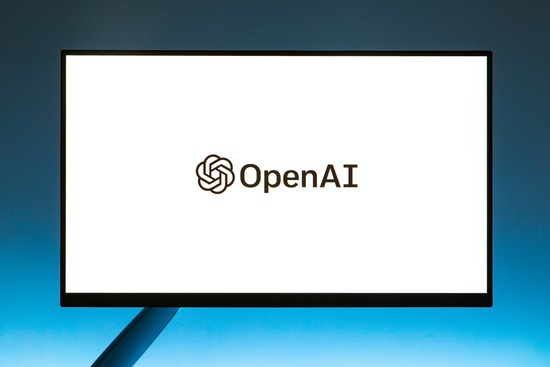Emerging Trends in Metalworking, Processing, and Tribology
From multi-axis CNC machining and advanced additive operations to digital twins and the industrial metaverse, we explore how the latest developments in metalworking, processing, and tribology are transforming industries and propelling job shops into a greener, more agile era.
Introduction
Over the last decade, the metalworking and metal processing landscape has seen dramatic changes in methods, tools, and materials—accompanied by an ever-growing emphasis on efficiency, sustainability, and flexibility. Today, industries ranging from aerospace to semiconductor manufacturing demand faster turnaround times, tighter tolerances, and near-zero defects. Meanwhile, environmental considerations and the rise of digital connectivity require forward-thinking strategies in machining, finishing, and maintenance.
A vital part of this transformation can be attributed to advances in tribology, where friction, lubrication, and wear studies have shaped next-generation metalworking fluids and coatings. Equally important is the ascent of digitalization—where technologies like point cloud scanning, advanced metrology, and digital twins merge with cloud-based business models to redefine manufacturing agility. The question is no longer if metalworking will evolve, but rather how far this evolution will go and how quickly it will reshape the entire supply chain, from one-piece custom orders to global production lines.
This article offers a comprehensive look at the latest trends and developments in metalworking, metal processing, metallurgy, and tribology. We delve into how multi-axis CNC machining, emerging additive operations, and new metrology strategies are meeting the demands of vertical industries like aerospace, EV manufacturing, and semiconductors. Finally, we explore how digital twins, predictive maintenance, and the industrial metaverse are driving manufacturing into a future where sustainability and innovation intertwine.
The Evolution of Multi-Axis CNC Machining
From Simple Subtractive to Complex Hybrid Approaches
Multi-axis CNC machining is arguably one of the most prominent advancements in contemporary metalworking. Initially, CNC mills and lathes operated on three axes (X, Y, and Z). However, growing requirements for complex geometries—such as turbine blades for the aerospace sector, injection molds for food and beverage packaging, or miniature components in semiconductors—have necessitated the addition of more axes (4-axis, 5-axis, and beyond). These multi-axis configurations allow machining of intricate parts with fewer setups, tighter tolerances, and better surface finishes.
The roughing stage remains critical for bulk material removal. Strategies like high-efficiency milling (HEM) have transformed roughing, allowing for increased toolpaths, higher feed rates, and improved heat management. Subtractive machining—although firmly established—has evolved to feature specialized tooling materials like polycrystalline diamond (PCD) and advanced carbide compositions, further optimizing wear resistance and cutting speed.
Progress in finishing and fine finishing processes continues to thrive, especially as industries demand minimal post-processing. For instance, complex aerospace parts may require extremely smooth surfaces and exact dimension tolerances to meet airworthiness standards. High-precision grinding, advanced tool path algorithms in CAD/CAM systems, and integrated measuring probes within CNC machines ensure that finishing operations are precise and repeatable.
Additive and Hybrid Production
In parallel with subtractive manufacturing, additive manufacturing (AM) has grown beyond prototyping to become an essential production method. A variety of 3D printing methods exist—such as directed energy deposition (DED) and laser powder bed fusion (LPBF)—that are utilized across verticals. Aerospace engineers combine additive technologies with multi-axis CNC finishing to refine surfaces and achieve part geometries once considered unmachinable.
We also see hybrid manufacturing cells that integrate both subtractive and additive processes in a single platform. These cells allow a machine to deposit material layer by layer in a required geometry and then immediately switch to a milling or turning spindle for precision finishing, eliminating the need for part transfer between multiple stations. For semiconductor components or sensors, such hybrid systems enable rapid iteration, enhancing design flexibility while ensuring that final components meet tight tolerances.
Transforming Vertical Industries
Semiconductors
The semiconductor sector illustrates the demand for miniaturization and precision. Multi-axis micro-milling, EDM (Electrical Discharge Machining), and high-tolerance grinding enable the production of tiny molds, probes, and housings with sub-micron accuracy. Further, advanced tribology insights help in designing specialized lubricants compatible with ultrapure environments.
Aerospace
In aerospace, aluminum and titanium alloys remain standard, but advanced composites and new high-temperature alloys are constantly being introduced. These materials require cutting strategies that minimize thermal damage and ensure structural integrity. High-pressure coolant systems, specialized tool coatings (e.g., titanium aluminum nitride), and advanced finishing (like superfinishing and micro-polishing) are critical. Aerospace manufacturers also rely heavily on deep hole drilling for components like landing gear and engine parts, employing multi-axis approaches to optimize drilling angles and avoid structural stress.
Electric Vehicles and Hybrid Components
Electrification has driven unprecedented growth in EV component manufacturing. Complex housings for batteries, intricate powertrain components, and specialized chassis designs require simultaneous 5-axis machining or additive approaches to produce lightweight but rigid structures. Tribology research is particularly relevant here, as EV components need lubricants that can function effectively in new types of gear trains, bearings, and drivetrains with minimal frictional losses. Consequently, super-finished gears and innovative coatings have become the norm to extend the service life of these critical components.
Food and Beverage
While not as glamourous as aerospace or EV sectors, the food and beverage industry benefits from highly sanitary and corrosion-resistant processes. Materials like stainless steel and specialized alloys must be machined under stringent conditions that meet FDA or other regulatory agency standards. Machining cells often employ dry or nearly dry machining conditions to reduce fluid contamination. Advanced finishing processes ensure surfaces are smooth and free of micro-cracks where bacterial growth could occur, bolstered by tribological coatings that facilitate cleaning and reduce friction.
Data Centers, Oil & Gas, and Process Industries
Components in data centers, such as cooling equipment parts and server racks, demand high-precision metal fabrication that can be scaled quickly. Process industries like oil and gas rely on robust, corrosion-resistant alloys—such as Inconel, Duplex Stainless Steels, and other superalloys—to withstand extreme conditions. In these industries, advanced machining strategies like submerged or immersion EDM can maintain part integrity and mitigate thermal stress. Additionally, tribology improvements are crucial to handling lubricating challenges in high-pressure or acidic environments.
Metrology, Point Cloud Scanning, and the Digital Twin
Shifting to Advanced Measurement
As tolerances tighten, inspection and metrology must keep pace. Coordinate Measuring Machines (CMMs) have long been the backbone of dimensional measurement, but modern production lines demand faster throughput and real-time data. Automated CMMs equipped with scanning probes can capture high-density point clouds, measuring intricate part surfaces more accurately and at higher speeds than traditional touch-trigger systems.
Beyond CMM, point cloud scanning and structured-light systems enable holistic 3D inspections of complex parts. These systems generate millions of data points, creating a detailed surface map that can be rapidly analyzed to detect deviations. This level of comprehensive inspection is particularly beneficial for aerospace and medical device manufacturers, ensuring every component meets stringent requirements.
The Power of Digital Twins
With the proliferation of real-time sensors and the advent of Industry 4.0, digital twins have emerged as a game-changer. A digital twin is a virtual replica of a physical process, product, or system that is continuously updated with real-world data. In the context of metalworking, digital twins allow for simulations of entire machining sequences before a single chip is cut.
By integrating data from CNCs, in-process measurement tools, and high-fidelity simulation, engineers can predict tool wear, machine deflection, and part deformation. This predictive capability not only slashes scrap rates but also informs predictive maintenance schedules—ensuring that critical machinery is serviced before failure occurs, thereby reducing unscheduled downtime. Furthermore, running these simulations within an industrial metaverse—a virtual ecosystem that merges digital models with real-time data—means stakeholders worldwide can collaborate, test process scenarios, and optimize production lines from anywhere.
Green Machining, Dry Machining, and Sustainability
Increasing environmental regulations and consumer expectations for eco-friendly products have driven a surge in green machining strategies. Coolants and lubricants often contain chemicals that pose health and safety risks, and their disposal can be costly. In dry machining, high-speed cutting combined with advanced tooling geometries can significantly reduce or eliminate the need for coolant. For instance, aerospace-grade titanium can be machined with minimal lubrication if the cutting parameters, tool geometry, and material coatings are carefully managed.
Additionally, alternative lubrication techniques such as Minimum Quantity Lubrication (MQL) drastically reduce fluid consumption by dispensing minute amounts of lubricant directly to the cutting zone. Lubricants themselves have evolved, using plant-based esters or biodegradable oils. These sustainable approaches not only reduce the environmental footprint but often result in lower overhead costs.
Tribology research continues to play a major role here, with friction and wear optimization leading to energy savings. Coatings such as diamond-like carbon (DLC) or titanium nitride (TiN) reduce friction between cutting tool and workpiece, minimizing heat generation and extending tool life.
The Rise of the Agile Job Shop and Cloud Manufacturing
From Low Mix, High Volume to High Mix, Low Volume
Traditionally, job shops specialized in low mix, high-volume parts. But as consumer demands shift and companies aim to differentiate with custom or rapidly iterated products, job shops have transformed into agile, high mix, low-volume providers—even producing single-piece batches on demand. This shift is facilitated by digital platforms that offer cloud-based manufacturing. Customers upload part designs online, receive instant quotes, and job shops leverage connected CNCs, additive manufacturing systems, and modular finishing cells to fulfill orders quickly.
This distributed network model means a small shop can access a global customer base, only manufacturing when there is an order—drastically reducing inventory costs. Additionally, scheduling algorithms and real-time machine data enable shop owners to optimize utilization, dynamically adjusting production sequences for maximum efficiency.
Collaborative Robotics
In line with this agility, industrial robots and cobots (collaborative robots) are increasingly prevalent. Cobots can work safely alongside human operators, taking on repetitive or ergonomic tasks like loading and unloading CNC machines, deburring parts, or performing inspection routines. This synergy frees human workers to focus on higher-value activities, such as process optimization and quality control.
Conclusion
The metalworking, metal processing, and tribology sectors are at a fascinating crossroads. Multi-axis CNC machining continues to redefine boundaries for part complexity and efficiency, while additive manufacturing brings unprecedented design freedom. In parallel, digital twins and the industrial metaverse offer game-changing predictive insights, helping manufacturers pivot swiftly in response to supply chain interruptions or changes in market demand. The synergy between advanced metrology techniques—like point cloud scanning and automated CMM—and real-time data analytics tightens quality control loops and elevates overall precision.
Simultaneously, sustainability and agility are no longer buzzwords but must-have capabilities. Dry machining, green machining, and biodegradable lubricants address environmental concerns. Meanwhile, job shops are making the leap from traditional high-volume runs to on-demand, high-mix, low-volume tasks facilitated by cloud manufacturing. These shifts not only open new revenue streams but also democratize high-precision engineering for smaller businesses and customers. Finally, industrial robots and cobots stand at the ready to bolster human labor, enabling safe, efficient, and adaptable production environments.
In this dynamic milieu, what emerges is a portrait of an industry that—driven by necessity, innovation, and forward-looking vision—has turned barriers into frontiers. From producing a single custom part over an online platform to forging the turbine blades of tomorrow’s commercial airliners, metalworking and processing have become more sophisticated, sustainable, and connected than ever before. The next wave of developments in metallurgy, tribology, and digital manufacturing will only further accelerate this evolution, bringing the future of metalworking into vivid focus for all vertical industries poised to benefit from its transformative potential.










